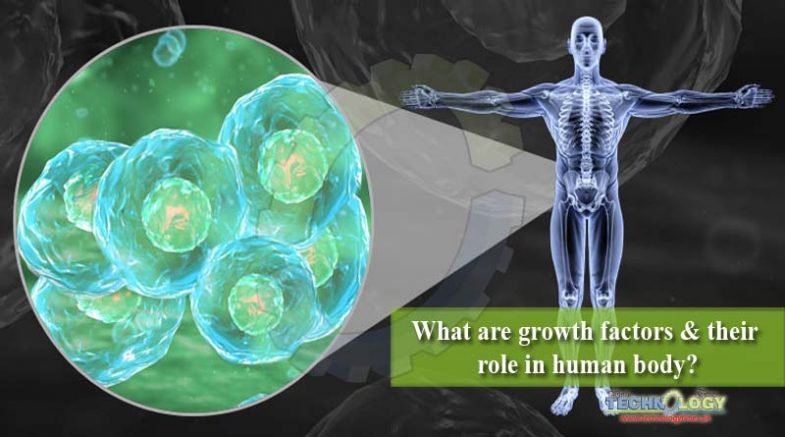In our human body there are some factors which play a great role in performing different growth mechanisms in our body. They are proteins in nature and composed of the steroid type of hormones.
 They were first discovered in 1952, in the nerve cell of humans by Stanley Cohen and Rita Levi-Montalcini. Each and every process related to cell division, regeneration, transcription, regulation and all biological activities they are done by these growth factors. In every second our body performs several biochemical reaction under the supervision of some specific growth factors. Inside a cell growth factors by the help of some hormones present in our body which are accountable for organism development.
They were first discovered in 1952, in the nerve cell of humans by Stanley Cohen and Rita Levi-Montalcini. Each and every process related to cell division, regeneration, transcription, regulation and all biological activities they are done by these growth factors. In every second our body performs several biochemical reaction under the supervision of some specific growth factors. Inside a cell growth factors by the help of some hormones present in our body which are accountable for organism development.
They also act as indicators for some receptors presents outside the cell to provide place for attachment with targeted cell. During embryonic stage of every human they accomplish complete development of the nervous system.
Activist are responsible for skin layer in mesodermal induction and also for the separation of some nerve cells. IGF is associated with maintenance of myeloid cells, neural stem cells differentiation and also for the renewing of some cells of nervous system. TGF-beta it is in authority for separation and conservation of somatic stem cells occur during primary embryonic stages. FGF, these are the growth factors that can be either acidic or basic in nature. The main function which they perform is the multiplying of cell, immigration of cells and also their separation according their specificity.
The growth factor that mainly have three sub-types named as wint-1, wint-2 and wint-7a. They are first seen in E coli for screening of recombination process. They are associated with the cell endurance, human recombination and tissue designing with their proper functioning. BMPs composed of ten sub-types. They function for induction process of our mesosphere and also work for bone formation.
The first step of wound repairment is blood coagulation. Eructation of blood causes tissue damage, this causes the activation of Hageman factor also known as coagulation factor 12. The damaged cells release tissue pro-coagulation factor. The availability of surface provides adsorption and activation of specific coagulation pro-enzymes. The dissipation of clot initiation stimuli starts blood clotting. The production of prostacyclin stops aggregation of platelet. The function of proteins in angiogenes is which is the process of formation of blood vessels, in this growth, migration and differentiation of endothelial cells occurs.
Intactproteins are comparatively less active than the proteins containing peptides. Fibrinogenpeptides A, B and anaphylatoxins C3a and C5a are biologically active, proteolysis releases these proteins.It is continued by accumulation of monocytes and selective monocyte chemo-attractants.This process is also known as inflammatory process and clot lysis. Coagulation also involves homeostasis.
Growth factors and platelet-rich plasma is widely used in orthopedic surgery which is increasing the use of it with a large number of clinical application possibilities. This functions by the production of growth factors which are released by alpha granules. They play an important role in cellular processes like chemotaxis, metabolism, differentiation and mitogenesis. Also growth factors are very important for regeneration and healing are required for musculoskeletal injury.
